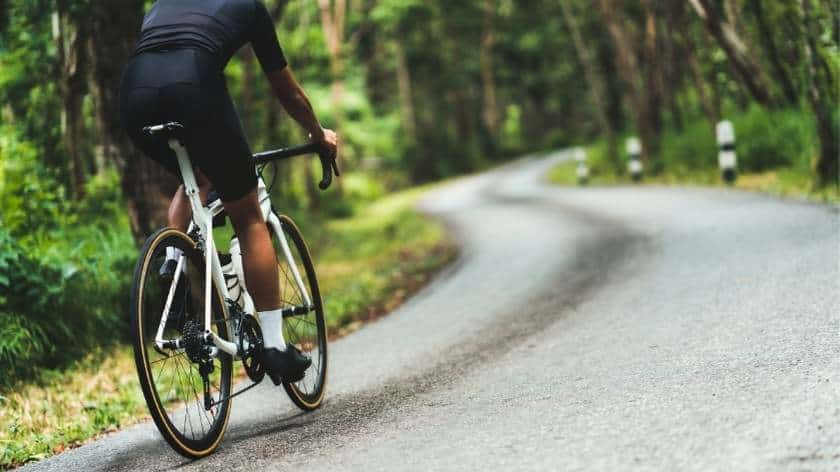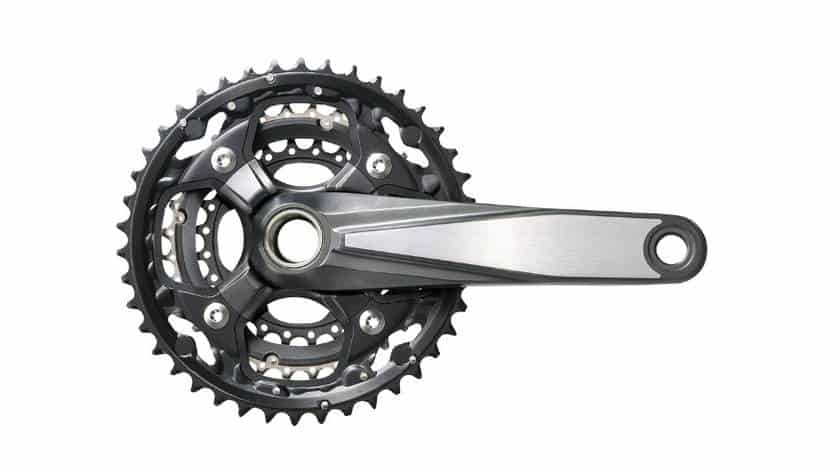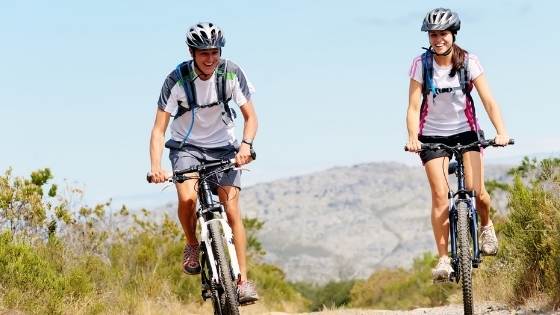
The most challenging section of any cycle route is the hills but are road bikes going to make your climb easier than a mountain bike or hybrid?
The road bike is designed for speed and high mileage, and when cycled on roads that are smooth and well maintained, the distance they can cover is far greater than any other type of bike. However, are they any easier to ride uphills over a shorter distance?
Road bikes are considered the easiest type of bike to ride uphills because they have a higher gear selection, lighter weight construction and thinner tyres which creates less friction to the surface. If you compare a road bike to a mountain bike on a smooth road surface, the road bike would be faster over the distance covered.
Even though we understand that a road bike is far better climbing uphill and the easiest type of bike to ride, what makes the road bike a more suitable option for hill cycling?
This article explores the road bike’s construction and examines the road bikes components that make it far superior to any other bike on the road.
Table of Contents
Why Is A Road Bike Easier To Ride Up Hill?

Gearing System – Front Chainring
The first area of the road bike to examine is the gearing system. The gears are the thing that makes the road bike easier to climb a hill because it gives you a wider range of selection.
A standard road bike has 3 chainring options;
- Standard double chainring with 53 teeth on the bigger outer ring and 39 teeth on the smaller inner ring.
- Semi-compact chainring with 52 teeth on the bigger outer ring and 36 teeth on the smaller inner ring.
- Compact chainring with 52 teeth on the bigger outer ring and 36 teeth on the smaller inner ring.

The standard is the hardest of the three types of chainring because you have to cycle more to get one rotation of the wheel, whereas the compact chainring is the easiest for cycling hills slightly less effort for the same rotation.
However, unless you a top cyclist or professional, then a hobby cyclist, like myself, a standard double chainring will be fine.

Gearing System Cassette
The cassette is the gearing system on the rear wheel, and on a road bike you have the option for a higher gear variation.
The cassette will have either 9 cogs up to 12 cogs, making it a 9 speed, 10 speed, 11 speed or 12 speed road bike.
The number of teeth in each cog varies but a standard will be 11 teeth in the small cog and 32 in the larger cog.
The more teeth and cogs you have, the easier it is to pedal because you have a higher selection of gears when the hill becomes steeper.
The easiest gearing selection for riding uphill is for the chain to be on the small chainring at the front and the large cog at the back.
Before hitting the hills, it’s crucial you know the most appropriate gear selection, or you might hit the hill and not have the power to get up the first part.
Secondly, you don’t want to pick your easiest gear straight away because you might run out of gears as the climb gets harder and steeper.
Therefore, select a medium to easy gear on entering the hill, and as the climb gets more difficult, move up the gears to make it easier.
Road Bike Are Lighter In Construction
The average weight of a road bike is around 10kg (22lbs), whereas a mountain bike can weigh 12kg (26lbs) and a hybrid 13.3kg (30lbs).
However, a carbon fibre road bike can weigh as little as 8kg(18lbs) which will be far easier to cycle a steep hill.
The overall bike weight can differ because of the various components like; seat, suspension, wheels, gearing system, saddlebags, and lights.
For the fastest and easiest ascent on a hill, you want to decrease as much weight from your bike because all that additional gear will slow your bike and make it harder.
Therefore, if your bike is already lightweight and you remove all the unnecessary items, you should effortlessly glide up the hill on a road bike compared to anything else.
Road Bikes Have Thinner Tyres
The last area of the road bike that will make it easier to ascend the hills is the thinner road tyres and wheels. The less tyre on the road surface, the less friction created, which doesn’t slow you down.
The bigger, wider mountain bike wheel will provide more grip, reducing slipping, but the friction will be far greater.
Furthermore, you want at least 120psi in your tyres because the more air within the innertube, the less tyre hits the ground.
The only issues with a road bike tyre are there is minimal tread meaning no grip. If the surface is wet or raining, it could be challenging to get traction, and the ride becomes harder. Make sure to put your weight over your back wheel to prevent slipping.

Should You Stand Or Sit Whiles Cycling A Hill
There isn’t any specific method that is ideal for cycling up hills, and it really depends on your overall experience and preference.
To generate more power, it is best to stand because you can utilise your entire bodyweight, taking some of the tension away from your legs.
A combination of sitting and standing is the option most cyclists practice, especially if you are travelling up a long hill and climbing for 30 minutes or more.
If you have a road bike with a three chainring set and a 12-speed gear set, you mind decide sitting is preferred. If you stand at a high cadence, you might realise you bounce more on the pedals, damaging the knees.
Furthermore, don’t avoid either sitting or standing if you don’t like them or find it tough. The only way to improve and get stronger is to work on your weakness. There is never a simple technique to climb a hill. You just have to clench your teeth and put in the hard work.
Are Road Bikes Easier To Ride Uphill Summary
I hope you enjoyed my article on why road bikes are easier to ride uphill than other styles of bikes. I would consider a road bike the best type of bike for hills and they will be 10-20% fast than mountain or hybrid bikes. The higher gear range, the light weight frames and the thinner tyres are ideal for cruising uphill effortlessly.


